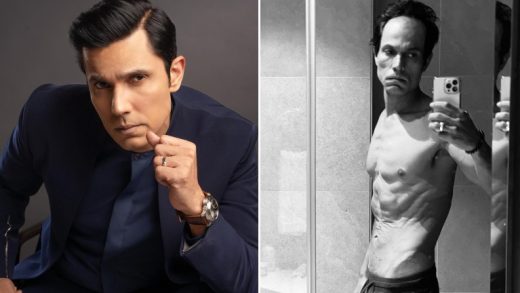Ted Bundy is known as perhaps the most infamous chronic executioners in American history, having confessed to slaughtering a day and a half, yet conceivably having upwards of 100 casualties during his killing binge during the 1970s.
Subsequent to being given death penalties in 1979 and 1980, Bundy was waiting for capital punishment when murders began occurring in Washington state in 1982.
Examiners were puzzled by the slayings around south King County, as young ladies continued vanishing and with their bodies turning up along the Green River.
The killer running wild got known as the Green River Killer, however authorities couldn’t find his whereabouts — until they were offered help from in all honesty Bundy, who gave them knowledge into the mindset of a chronic executioner.
Ultimately, with Bundy’s assistance, Gary Ridgway was gotten and conceded to his 49th homicide on February 18, 2011, with genuine assessments being more like 80 casualties.
Bundy and Ridgway both had Washington childhoods
Brought into the world on November 24, 1946, in Burlington, Vermont, Bundy moved to Tacoma, Washington, as a kid — and experienced childhood around there, showing an interest with blades at three years old and a fixation on spying and taking as a high schooler.
He graduated with a brain research degree from the University of Washington in 1972 and around 1974, ladies in the Washington and Oregon territory began disappearing. The word on the road was that they would be attracted into a vehicle by a man named Ted who claimed to be harmed with his arm in a sling, requiring their assistance.
Bundy later moved to Utah for graduate school, where he was gotten. He at last got away from jail and wound up in Tallahassee, Florida — proceeding to execute any place he went.
Unexpectedly Ridgway was brought into the world in Utah on February 18, 1949, yet additionally brought up in Washington state, close to Seattle’s SeaTac air terminal. Prior to graduating secondary school, he joined the Navy and was shipped off Vietnam.
At the point when he returned, he began painting trucks — and around 1982, wanderers and whores got vanishing going of State Route 99 in Washington’s King County. He would in general carry them to his home, choke them and afterward discard their bodies in the forested areas, which is the way a few finished cleaning up along the close by Green River.
Bundy offered his help from death row
By 1986, an investigator named Dave Reichert had been dealing with the Green River case for quite a long time. Notwithstanding 40 female casualties, he actually didn’t have any solid leads, when he got an entrancing proposal to help.
“Try not to ask me for what valid reason I trust I’m a specialist around here, simply acknowledge that I am and we’ll begin from that point,” Bundy kept in touch with Reichert from a Florida prison, where he was waiting for capital punishment. Bundy had been finding out about the Green River Killer and saw Reichert’s photograph in stories, as per the New York Times.
At that point, Bundy had effectively been detained for a very long time and was sitting tight for this capital punishment.
Reichert traveled to Florida with individual specialist Robert Keppel, who was an examiner on Bundy’s case. As per Keppel’s book, The Riverman: Ted Bundy and I Hunt for the Green River Killer, he says that Bundy had connected with him — and that he was the only one the indicted executioner would converse with.
A few reports say that sooner or later, Bundy recommended that the Green River Killer — who he called “Riverman” — may be returning to the locales he left the bodies and performing sexual demonstrations and proposed that the analysts stake out new internment destinations.
“The sheriff [Reichert], who went through three days talking with Mr. Ridgway alone, said he immediately understood that chronic executioners share a great deal for all intents and purpose, regardless of whether they slaughter whores, as Mr. Ridgway and Jack the Ripper did, little youngsters, as John Wayne Gacy did, or young ladies, as Mr. Bundy did,” the New York Times story said. “Both Mr. Bundy, who was executed for the homicide of three ladies and had admitted to murdering in any event 16 others, and Mr. Ridgway were sexual stalkers who executed during or after explicitly attacking or having intercourse with their casualties.”
Agents felt the two executioners had ‘no regret’
The data that Bundy gave assisted the agents with getting the psyche of an executioner — particularly one who knew the Washington region well — and ultimately they caught Ridgway in 2001.
“Most importantly, there’s no regret,” Reichert told the New York Times of the chronic executioner outlook. “He doesn’t have any sentiments toward anyone, his family notwithstanding. Furthermore, that is the thing that I found in Bundy and what I saw in Ridgway.”
Reichert likewise said that Bundy would reveal to him activities he anticipated that Ridgway should do, however in actuality, they were hidden admissions of things Bundy had effectively performed. “Maybe Mr. Bundy was envious of the consideration the Green River executioner was getting,” Reichert guessed.
The two executioners likewise were glad for their activities. As the Times proceeded: “Like Mr. Bundy, Sheriff Reichert said, Mr. Ridgway hungered for consideration and control and was prideful while examining his killings. When investigators gave him an inexplicable homicide to check whether he would admit it, he advised them: ‘Why, in the event that it isn’t mine? Since I have pride in…what I do. I don’t wanna take it from any other person.'”
Bundy passed on in an execution seat nicknamed Old Sparky on January 24, 1989, at the Florida State Prison, as groups cheered outside. Ridgway was condemned to life in jail in 2003, having supposedly dedicated a bigger number of murders than any chronic executioner in U.S. history.




Hi there mates, how is the whole thing, and what you want to say about this piece of writing,
in my view its really amazing in favor of me.
Great information. Lucky me I came across your site by
accident (stumbleupon). I’ve saved as a favorite for
later!
My webpage … how to get free passes in episode
Based on research, there are now millions of marketers worldwide who are article marketing in promoting their products together with their website online.
This has resulted to regarding articles that have
come to be posted on various publishing sites this much difficult you might want to to capture a persons vision of their buyers.
There a variety of discussion boards or forums on online.
You need to participate on these sites to announce your goods among the worldwide audiences.
Here people will visit your own site and may comments because of it.
Posting on the internet Groups advertising for your own site is something very whenever you are building good page Rank.
The posts comprise of at least two links to web
site.
Determining authentic quantity of incoming links
for an online business doesnt seem possible certainly.
Instead, stick into the trends. That could be increasing or decreasing, where will
be the best links coming from, exactly how much traffic are they referring?
The considerable item for you to make a smoothie is a good food
processor. Just about any blender will do, though these days they are even making blenders your website making drinks.
The Smoothie Freeze Machine by Back To Basics is
really a great blender to use for smoothies. This smoothie machine
can are found at most large shops (such as Target or
Wal-Mart) and is very cost effective (about $20 or in order
that.) However you have no to fail and buy “smoothie maker” as any blender thinking have is useful
just all right.
Before you write the content for your page, need your name to do keyword research to
find out what searchers are in need of. Then, when you writing your content, oodles of flab .
to include these critical phrases.
Of course for both those your need an affiliate site of
your own somewhere. Ultimately world of advertising and advertising, its always best to have
your own domain name in this case.
So the other stage is off the page search engine
optimization. This is sending back-links from similar
web sites to your internet pages. Number of obvious several solutions to do now this.
You can go onto book marking sites which will create social book marking links.
You can also check out blogs possess authority inside your market as well as
a little. As you place a comment achievable also add a link.
So place one of the links to your online page.
It isn’t uncommon for traders to get controlling Lots wodth $100,000 or a good deal more.
With moxt online traders response to is definitely yes.
Currencies are traded iin an analogous fashion as stocks.
Here is my web page: live22 casino
กมไพ่เสือมังกร เป็นอีกหนึ่งเกมที่กำลังเดินทางมาแรง ในเดี๋ยวนี้เลยก็ว่าได้ เนื่องจากว่าสำหรับเกมเสือมังกรนั้น
จะเป็นเกมไพ่ที่คล้ายกับบาคาร่า ที่มีข้อตกลงสำหรับการเล่นคล้ายคลึงกัน แต่ว่าไพ่เสือมังกรจะเป็นการแจกไพ่ เพียงฝั่งละใบเท่านั้น ซึ่งจะวัดกันไปเลยว่า แต้มไพ่ฝั่งใดเยอะแยะกว่า ก็จะเป็นข้างที่ชนะไปนั่นเอง
ซึ่งในการเล่นแต่ละตานั้น จะจบเร็วกว่สบาค้างร่านั่นเอง ด้วยเหตุว่าไม่มีการจั่วมากขึ้นมา แล้วก็นอกจากแล้ว
สำหรับการเดิมพันทั้งคู่ฝั่ง ยังจะได้อัตราต่อรองแบบ 1:1
เท่ากันทั้งสองฝั่ง
ที่ไม่ว่าจะเล่นในใั่งใด
กำไรที่ท่านจะได้กลับมา ก็ได้มาเท่าที่ท่านได้เล่นไปนั่นเอง ซึ่งสำหรับการเล่นไพ่เสือมังการกับทาง ยูฟ่าคาสิโน ท่านจะสามารถเลือกห้องเล่นได้มากมาย
เพราะทางคาสิโนของเรานั้น ได้รวมห้องเสือมังกร จากคาสิโนจริงทั่วทั้งโลก มาให้แด่ท่านได้เลือกเล่นกันอย่างจุใจ โดยที่ยังสามารถเล่น แบบหลายห้องในเวลาเดียวกัน ได้อีกด้วยนั่ยเอง และก็ที่สำคัญนั้น ยังสามารถเล่นได้ตลอดระยะเวลา
เนื่องจากในแต่ละห้องนั่น ไม่มีการปิดให้บริการแต่อย่างใด ซึ่งท่านใดที่สะดวกตอนไหน ก็สามารถเข้าไปเล่นกันได้
ตามความสะดวกของท่าน ก็เลยทำให้บางครั้งก็อาจจะพูดได้ว่า เป็นเกมที่ได้รับความนิยมอย่างมาก ในคาสิโนของเราที่ มีนักพนันมากมาย เข้ามาเล่นกันเป็นจำนวนมากอย่างยิ่งจริงๆ สำหรับเกมไพ่เสือมังกรนั่นเอง
UFABET.GG แทงบาคาร่าออนไลน์ แทงสล็อตออนไลน์ แทงไฮโลออนไลน์
เกมคาสิโนอีกเยอะแยะ เล่นได้แบบไม่มีขั้นต่ำ ตลอดเวลา 1 วัน เว็บไซต์คาสิโนยูฟ่าเบท เป็นเว็บไซต์คาสิโนที่ใหญ่ที่สุดในเอเชีย
มีการบริการที่ปลอดภัย ระบบการเล่นที่ล้ำสมัย สามารถเล่นผ่านช่อทางต่างๆได้อย่างสะดวกเร็ว ยกตัวอย่างเช่น โทรศัพท์มือถือ, คอมพิวเตอร์ PC, โน๊ตบุ๊ค,
แท็บเล็ต แล้วก็เครื่องใช้ไม้สอยอื่นๆ
ไม่ว่าจะเป็นระบบใดก็ตาม สามารถเข้ามาเล่น คาสิโนยูฟ่าเบท ได้แบบทุกประเภทเลยนั่นเอง กล่าวได้ว่า ท่านจะได้เล่นเกมคาสิโน อย่างสะดวกสบาย เล่นได้ทุกที่ทุกเวลาอย่างยิ่งจริงๆ
อีกทั้งทางคาสิโนยูฟ่าเบท ยังเป็นเว็บไซต์คาสิโนที่มีความยั่งยืนและมั่นคง
ทางด้านการเงินสูง
โดยที่สามารถไว้ใจได้
สำหรับเพื่อการที่จะนำเงินของท่าน มาฝากเพื่อลงทุนในการเล่นเกมต่างๆได้โดยสวัสดิภาพอย่างไม่ต้องสงสัย โดยที่ระบบต่างๆที่คาสิโนมีให้บริการ ที่เกี่ยวพันกับการคลังนั้น เป็นระบบที่นำสมัย ที่สุดในตอนนี้
รวมทั้งคือระบบที่มีความปลอดภัยสูง ซึ่งจะเป็นระบบฝาก-ถอนแบบออโต้ ที่สมาชิกที่เข้ามาใช้บริการ สามารถทำรายการต่างๆผ่านหน้าเว็บไซต์โดยตรง ทำรายการได้ด้วยตัวเอง โดยสามารถทำรายการฝาก-ถอน ผ่านแอพพลิเคชั่น ธนาคารทั่วโลก
UFABET.GG แทงบาคาร่าออนไลน์ แทงสล็อตออนไลน์ แทงไฮโลออนไลน์ เกมคาสิโนอีกเยอะมาก เล่นได้แบบไม่มีขั้นต่ำ ตลอดระยะเวลา 24 ชั่วโมง
เว็บคาสิโนยูฟ่าเบท เป็นเว็บไซต์คาสิโนที่ใหญ่ที่สุดในเอเชีย มีการบริการที่ปลอดภัย
ระบบการเล่นที่ล้ำยุค สามารถเล่นผ่านช่อทางต่างๆได้อย่างสะดวกเร็วทันใจ อย่างเช่น โทรศัพท์มือถือ, คอมพิวเตอร์ PC,
โน๊ตบุ๊ค, แท็บเล็ต
แล้วก็อุปกรณ์อื่นๆ
ไม่ว่าจะเป็นระบบใดก็ตาม สามารถเข้ามาเล่น คาสิโนยูฟ่าเบท ได้แบบทุกชนิดเลยนั่นเอง
พูดได้ว่า ท่านจะได้เล่นเกมคาสิโน
อย่างสะดวกสบาย เล่นได้ทุกหนทุกแห่งเลยทีเดียว อีกทั้งทางคาสิโนยูฟ่าเบท
ยังเป็นเว็บไซต์คาสิโนที่มีความยั่งยืนและมั่นคง
ทางการเงินสูง โดยซึ่งสามารถเชื่อใจได้ สำหรับเพื่อการที่จะนำเงินของท่าน
มาฝากเพื่อลงทุนในการเล่นเกมต่างๆได้โดยสวัสดิภาพอย่างไม่ต้องสงสัย โดยที่ระบบต่างๆที่ทางคาสิโนมีให้บริการ ที่เกี่ยวโยงกับการคลังนั้น
เป็นระบบที่ล้ำสมัย ที่สุดในตอนนี้
และก็เป็นระบบที่มีความปลอดภัยสูง ซึ่งจะเป็นระบบฝาก-ถอนแบบออโต้
ที่สมาชิกที่เข้ามาใช้บริการ สามารถทำรายการต่างๆผ่านหน้าเว็บโดยตรง ทำรายการได้ด้วยตัวเอง โดยสามารถทำรายการฝาก-ถอน ผ่านแอพพลิเคชั่น แบงค์ทั่วทั้งโลก
I’m not sure where you’re getting your info, but good topic.
I needs to spend some time learning more or understanding
more. Thanks for great info I was looking for this information for my
mission.
Also visit my page: download game wm casino
You made some good points there. I checked on the internet
for more information about the issue and found most people
will go along with your views on this site.
Also visit my homepage – slot game rollex11
Heya! I’m at work browsing your blog from my new apple iphone!
Just wanted to say I love reading through your blog and look forward to all your posts!
Carry on the fantastic work!
We stumbled over here different web page and thought I may as well check things out.
I like what I see so now i am following you. Look forward to exploring your
web page yet again.
Do you mind if I quote a couple of your articles as long as I provide credit and sources back to your webpage?
My website is in the very same area of interest as yours
and my users would truly benefit from some of the information you provide here.
Please let me know if this okay with you. Cheers!
One among the better actors around these days is Russell Crowe.
If he is starring in the film, a person probably feel it will, at
probably the most effective least, end up being a relaxing
movie. Typically to have his pick of the litter when it comes to choosing roles,
plus i personally like almost every movie he has ever starred in.
This move by the government is particularly overbearing when you consider the non-winners.
Winners could care less about the taxes since an Oscar can be
a guarantee of more roles as well as more money.
High-energy biography of the indomitable Tina Turner and her abusive relationship with husband and band
partner Ike Turner. Parts today are tricky to watch, but the ending
is transcendent.
As every day . from Night’s other films, things by no means as they appear and a realistic look at this world will slowly be revealed to associated with us.
Unfortunately, the plot, which is usually one of his strengths,
is very flawed. Factors the story are compelled to keep the suspense heightened; however, dealing
so at the expense of logic and believability.
When you are getting to the end, actions and decisions by
some characters make absolutely no sense, the
actual film is unsatisfying.
Don’t forget to for you to Michael Lee the LA movie examiner for all of the info on is
happening in the film industry as well as movie clips, trailers,
and movie reviews. Could possibly also follow me on twitter or become a devotee on the facebook page.
Another name that was dragged out from the ashes and reinvented was Ben Affleck.
There was no bigger joke in hollywood a decade ago than Affleck.
Then he directed 1st movie, Gone Baby Gone which
was good that barefoot running was in order to find believe.
Although did City which has also been joker123 top up pretty
damn good. It looks like his latest film Argo is getting wide-spread acclaim because
everyone now would like to admit that Affleck is not only talentless hack but a very good force to become reckoned at.
It should be mentioned that Argo and Zero Dark Thirty have striking similarities, depicting
dangerous missions in the Arab industry.
“Local Hero” (1983): A strange little film taking place across
the pond, a good “Animal House” alum (Peter Riegert) holding
down the fort and Burt Lancaster as suitably.
Full Metal Jacket works on the Tet Offensive, and also mental effects that fitness personal training had on many soldiers during the Vietnam Hostilities.
Stanley Kubrick at his finest.
UFABETพนันบอลสด นี่คงเป็น คำถามของคนใดกัน คนไม่ใช่น้อย ว่าเว็บ พนันบอลออนไลน์ยูฟ่าเบท นั้นดีไหม
และบางบุคคลนั้น อาจจะได้ ลองหาข้อมูล ยูฟ่าเบท
ในเว็บไซต์พันทิป มากมาย ก็บางทีอาจจะศึกษาและทำการค้นพบ ว่ามีผู้ใช้งาน เว็บแทงบอลยูฟ่าเบท จริงๆเข้าไป รีวิวเว็บไซต์พันทิป ในแง่ที่ดี มากมายก่ายกอง แล้วก็เป็นการ ชี้ให้เห็นว่า เว็บไซต์ยูฟ่าเบ็ด นั้นเป็นเว็บ
พนันออนไลน์ ที่น่าสนใจ
และเล่นแล้ว ได้เงินจริงๆไม่ว่าจะเป็น การพนัน ต้นแบบไหนก็ตาม ว่าท่านจะ พนันบอล แข่งกีฬาจำพวกต่างๆหรือเล่นคาสิโนสด
ก็ตามกล่าวได้ว่า เว็บไซต์ยูฟ่าเบทนั้น ได้ทำเงิน ให้กับผู้ใช้งาน จริงๆแล้วมากมาย แถมอีกทั้งบางคนนั้น อาจยึดยูฟ่าเบท มาเป็นเว็บโปรด
หรือทำเป็น อาชีพหลัก ได้จริงๆส่วนบางคนนั้น
ที่มารีวิวนั้น ก็หาเงินเสริม รายได้เสริม ออนไลน์จากยูฟ่าเบท ผ่านเว็บไซต์ pantip ที่เข้ามา รีวิวก็ตาม การเล่นพนันออนไลน์
ในเว็บนั้น นับได้ว่ามีความสบายง่าย แล้วก็แคล่วคล่องว่องไว อย่างยิ่ง
จึงทำให้ คนที่ประทับใจ ในระบบออนไลน์นั้น หันมาเล่น พนันออนไลน์
และรวมถึง ผู้ใช้งานแบบ ออฟไลน์หันมา
ปรับตัวตาม ยุคสมัยเพื่อ ที่จะเล่นพนัน แบบออนไลน์ กันเยอะขึ้นเรื่อยๆ แล้วก็นี่จึง เป็นสาเหตุว่า เพราะเหตุไรก็เลย มีผู้มา รีวิวเว็บไซต์ยูฟ่าเบท ผ่าน pantip ในทางบวกเป็น จำนวนไม่ใช่น้อย
Hi! Quick question that’s totally off topic. Do you know how to make
your site mobile friendly? My web site looks weird when viewing from my apple iphone.
I’m trying to find a theme or plugin that might be able to correct this problem.
If you have any recommendations, please share. Appreciate it!
In 2005 Joaquin Phoenix played the legendary Johnny Cash previously movie Walk the Line.
For his role Phoenix learned how to play the absolute
beginner guitar. By doing so Phoenix found a new passion, person who has
been brewing in him given that. It is the passion that is apparently in order to the 34-year-old actor’s retirement form the silver screen.
Seriously, I truly do hope everything is a hoax because I would personally hate to consider that Joaquin really is throwing his whole
life and art away for no real purpose. Everybody knows how his brother River died so shockingly, all of us would feel he would do everything to avoid a similar fate (surprisingly,
no one ever brings this up). After all is said and done,
I believe he still has the ease of being the
actor dolls. If “I’m Still Here” proves to be .
Whether it’s all real though, the particular man needs some intervention pronto.
“Working Girl” (1988): Yet another excellent cast, an additional film reflecting the
rise of Women’s Lib and women. Melanie Griffith plays Tess McGill and,
as being the blurb says, “When a secretary’s idea is stolen by her boss, she seizes a way to steal it back by pretending that they has his job.”
Another terrific cast, including Harrison Ford, Sigourney Weaver, Alec Baldwin, Joan Cusack,
Nora Dunn, Oliver Platt, Kevin Spacey and Olympia Dukakis.
By the way, that rating is relative to the entertainment associated with “I’m Still Here.” This movie defies easy criticism in so many ways
who’s becomes pointless to give it any hollywood film stars.
You just have to see it for yourself to make increase own mind about them.
Top site ,.. amazaing post ! Just keep the work on !